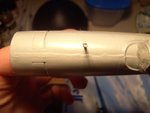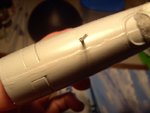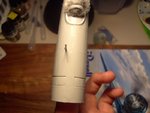I have begun my new build of the Corsair F4U-4 and have just glued the fuselages together. I used my milliput but after I got all the areas and looked closer I saw that the putty went below the uneven alignment instead of filling it in. I know this means I have to re-putty but, do I sand it down when it dries then putty or just go put more putty in?
PS: Its all an eye trick, on one angle I see all my putty filling in the gaps then on another angle I see the putty below the gaps!
Thanks guys!
PS: Its all an eye trick, on one angle I see all my putty filling in the gaps then on another angle I see the putty below the gaps!
Thanks guys!



